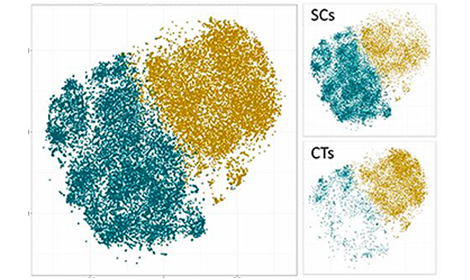It's an amazing world today. With increased longevity, there are many centenarians, but have you heard of supercentenarians, or persons over 110 years? Well, hear about them now! What marks them out? No one knew for long, but now scientists from the RIKEN Center for Integrative Medical Science (IMS) and Keio University School of Medicine in Japan have an inkling.
Scientists used single-cell RNA analysis to figure out that an exclusive kind of immune cells called cytotoxic CD4 T-cells determine the longevity of humans. The research was published in Proceedings of the National Academy of Sciences (PNAS).

A class apart
You know that supercentenarians are a class apart because they live longer than most people. However, here are some more amazing facts: firstly, they are "rare". So in Japan in 2015, there were more than 61,000 who crossed 100. Yet there were only 146 supercentenarians. Research also shows that those over 110 years are more resistant to illnesses such as infections and cancer as long as they lived. Hence, they might have a particularly strong immune system, which is under study right now.
Hence, scientists explored the circulating immune cells of supercentenarians and then some younger control groups. They picked out 41,208 cells from seven of the species. It worked out to an average of 5,887 per subject and 19,994 cells for controls (which again meant an average of 3,999 per subject) from five persons in the 50 to 80 group.
Larger number of cytotoxic cells
Scientists discovered that while the number of B-cells seemed to be lower among supercentenarians, the number of T-cells seemed to be the same, and in fact one subset of T-cells was actually more among supercentenarians. Hence, the supercentenarians seemed to show a larger number of cytotoxic cells that could decimate other cells. Sometimes, they amounted to 80 percent of all T-cells, vis-à-vis just 10 or 20 percent among controls.
According to Kosuke Hashimoto of IMS, the first author of the paper, "We were especially interested in studying this group of people, because we consider them to be a good model of healthy aging, and this is important in societies like Japan where aging is proceeding rapidly."
New insights
IMS Deputy Director Piero Carninci, one of the leaders of the groups, says, "This research shows how single-cell transcription analysis can help us to understand how individuals are more or less susceptible to diseases. CD4-positive cells generally work by generating cytokines, while CD8-positive cells are cytotoxic, and it may be that the combination of these two features allows these individuals to be especially healthy.
"We believe that this type of cells, which are relatively uncommon in most individuals, even young, are useful for fighting against established tumours, and could be important for immunosurveillance. This is exciting as it has given us new insights into how people who live very long lives are able to protect themselves from conditions such as infections and cancer."









